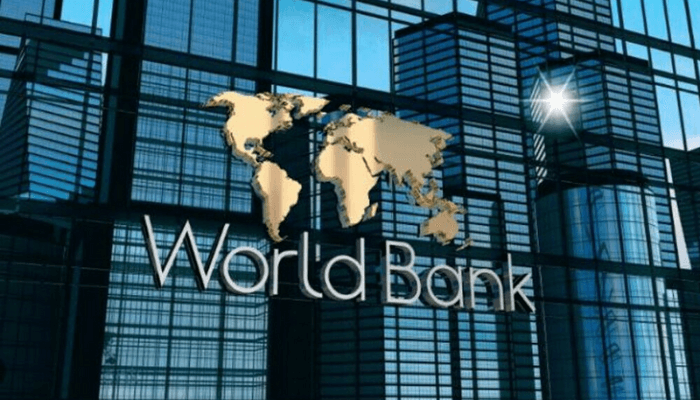Nearly six million Nigerians have gained access to electricity through mini-grids and stand alone solar systems, a World Bank report has found, even as the country still faces the largest electricity access gap in the world.
The newly released report, “Tracking SDG7: The Energy Progress Report 2025”, obtained on Friday, recognises Nigeria as a rising star in the adoption of clean energy solutions despite persistent problems with grid based supply.
The World Bank said the mini-grid and solar deployments were part of Mission 300, a global initiative to speed up energy access through decentralised solutions.
“These technologies provide reliable, clean, and affordable power, offering faster deployment and supporting local economic development in Africa’s poorest and most isolated regions offering faster deployment and supporting local economic development. For instance, Nigeria’s mini-grid projects have connected nearly 6 million people through more than 170 mini-grids and almost 1.2 million stand-alone solar systems,” the report stated.
The Africa Mini-Grid Developers Association, AMDA, also described Nigeria as hosting one of the continent’s most vibrant mini-grid markets.
“Mini-grids are growing in size and gravitating toward markets with enabling financial and regulatory frameworks. Nigeria is leading that shift,” AMDA said in its 2025 market trends report.
Between 2022 and 2024 the average number of connections per mini-grid in Nigeria nearly doubled, rising from 244 to 458 connections. The report said this growth was driven by rising investor confidence, maturing regulation, and more concessional financing.
The mini-grid sector has also become an important source of jobs. AMDA reported that 27 mini-grid developers created over 6,000 jobs in the last four years, most of them in rural communities where the systems were installed.
“Mini-grids are growing in size and gravitating toward markets with an enabling financial and regulatory framework. The average number of connections per mini-grid has grown from 244 per site reported in 2022 to 458 in 2024.
“During this same period, mini-grid developers have flocked to markets with enabling ecosystems for mini-grid development, especially in Nigeria. Mini-grids are significant contributors to job creation in Africa. Just 27 mini-grid developers surveyed created more than 6,000 jobs over the past four years, with the majority of them in the communities where the mini-grids are located.
“While mini-grid costs have decreased globally, capital expenditure for deployment in Sub-Saharan Africa remains stubbornly high compared to other regions. This regional discrepancy reflects factors like high logistics costs and low population density, but improved supply chain efficiency, economies of scale, and more favourable tax treatment can help reduce costs.”
Despite the advances, the World Bank warned that Nigeria remains at the centre of a global electricity crisis. The report found that 86.8 million Nigerians still lack access to electricity, the largest number of any country. For the third year in a row, Nigeria topped the list of countries with the biggest electricity access deficit.
This figure differs from recent comments by the Minister of Power, Adebayo Adelabu, who said 150 million Nigerians now have access to adequate electricity while an estimated 80 million still lack reliable power.
The report showed that 61 per cent of Nigerians had access to electricity last year and that access to clean cooking energy remained low at 26 per cent.
“Once again, Nigeria (86.8 million), the Democratic Republic of Congo (79.6 million), and Ethiopia (56.4 million) accounted for roughly one-third of the global electricity access deficit. In total, the 20 countries with the largest deficits made up 76 per cent of the global total, with 18 of them located in Sub-Saharan Africa,” the report noted.
International public finance for Nigeria’s decentralised renewable energy expansion rose sharply in 2023. The country received $829 million in international public flows, making it the fifth largest recipient globally. This marked a major jump from 2022 when Nigeria was not among the top 30 recipients.
“Nigeria’s upward movement reflects growing investor and donor confidence in its clean energy sector,” the report said.
Most of the new funding, $698 million or 84 per cent, came from the World Bank’s Nigeria Distributed Access Through Renewable Energy Scale-Up Project, a concessional loan meant to speed up deployment of mini-grids and stand alone solar systems. Another $35 million grant from the European Union backs the EU-Nigeria Cooperation Programme for Sustainable Energy Sector, a five year programme to develop large scale solar PV and small hydro solutions for agro-industrial zones from 2023 to 2028.
An economic lens on the energy transition
Experts say the shift to decentralised clean energy must link to wider economic reform if gains are to last. Phasing out fossil fuels will change where jobs and income come from. That shift must be managed so workers and communities are not left behind.
Good governance of transition minerals is also vital. Minerals used in batteries and solar panels must be mined and traded in ways that benefit local people. Clear rules and fair contracts can help prevent conflicts and build local value chains.
Decentralised energy systems like mini-grids can help break the power monopoly of the national grid and bring power closer to users. This can cut energy costs for small businesses, extend working hours, and boost productivity in markets and farms. It can also support local industries that add value to raw products.
Eradicating energy poverty will need both finance and local structures. More grants and concessional loans will help build systems. At the same time regulators, local governments, and community groups must work together to manage and maintain the systems. Building local capacity for operations and repairs will keep systems running and create long term jobs.
Institutions to support the transition must be put in place. This means clear policies, predictable taxes, better supply chains, and simpler regulatory approvals. Without these changes the cost of deploying systems will stay high and progress will slow.
Even with rising investment, challenges remain. AMDA and the World Bank warned that capital costs in Sub-Saharan Africa are still high because of expensive logistics, weak infrastructure, and low population density. The report said improved supply chains, economies of scale, and better tax regimes could help cut costs.
The World Bank also flagged slow and fragmented disbursement of pledged funds. “Although more than $9bn in concessional capital has been committed globally over the past five years, funding disbursement remains sluggish, delaying the rollout of life changing mini-grid projects,” the report said.
New financing tools are emerging to reduce investment risk. Ideas such as blended finance, escrowed grant payments, and monetisation of environmental benefits could help attract corporate and institutional investors to Nigeria’s clean energy market.
Regulation remains a key bottleneck. The report warned that the slow pace of regulatory approvals could stall the sector’s momentum. “Streamlining regulatory processes and addressing bureaucratic bottlenecks will be critical to achieving energy access targets on time,” it said.

